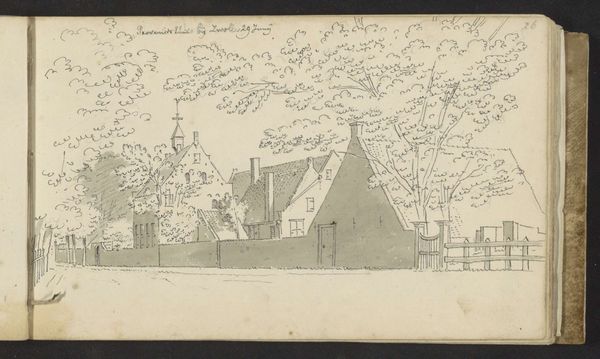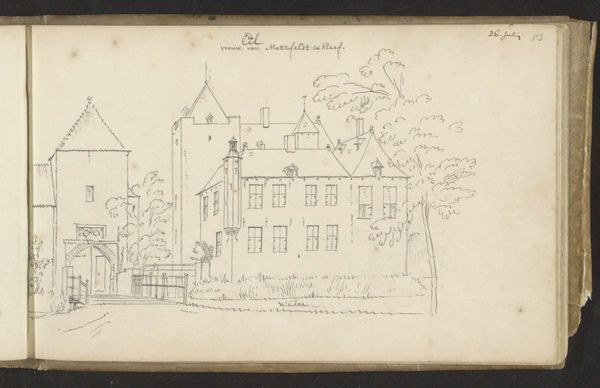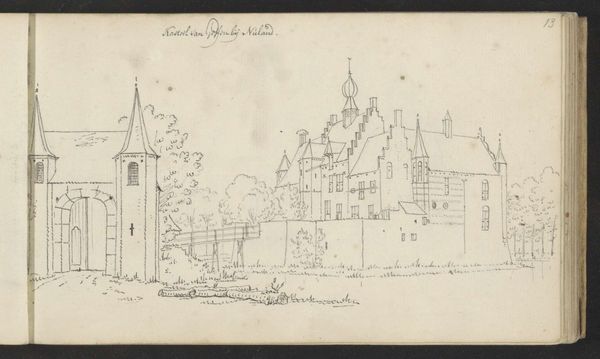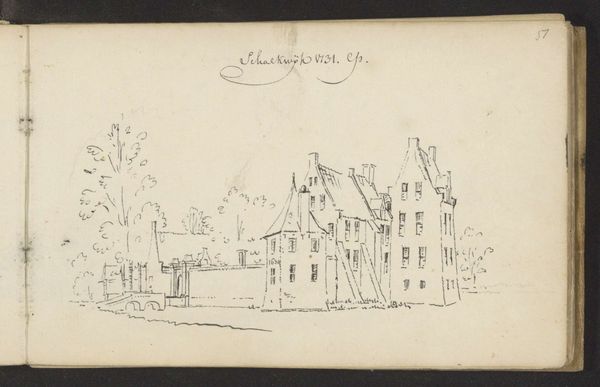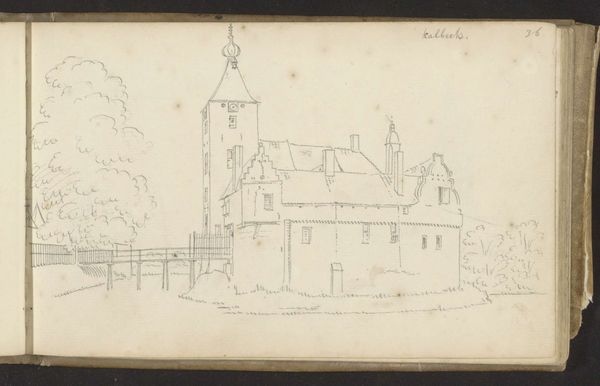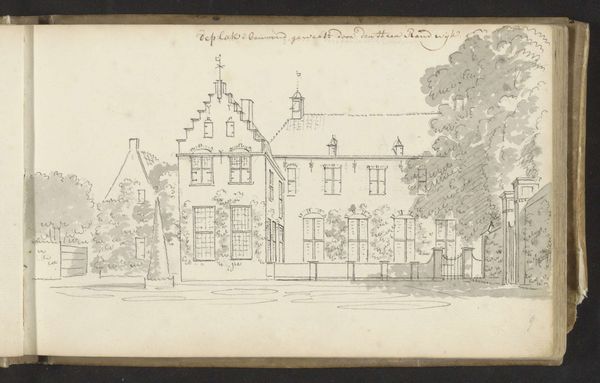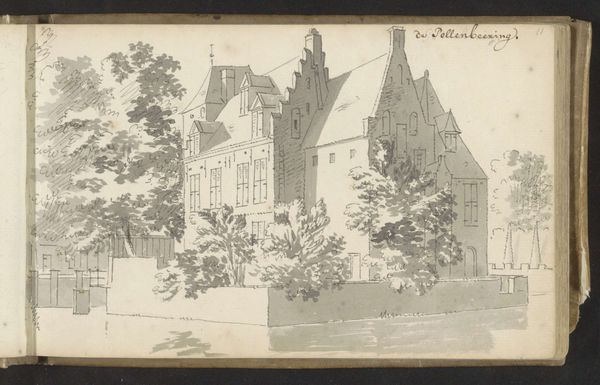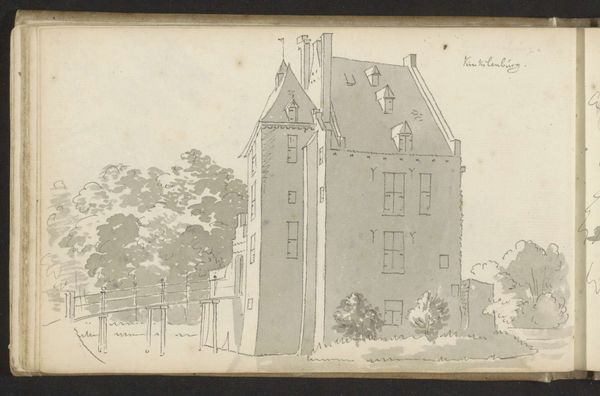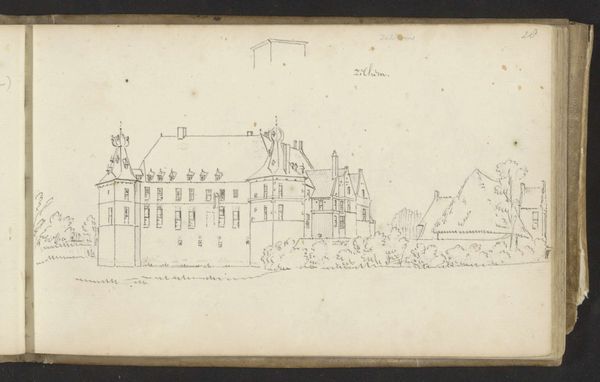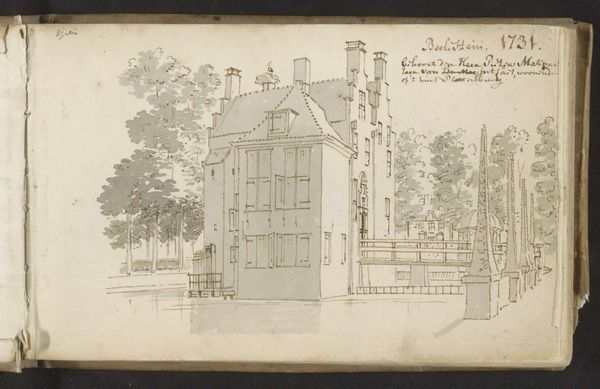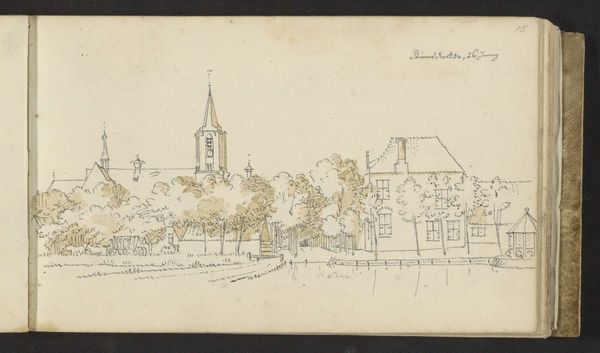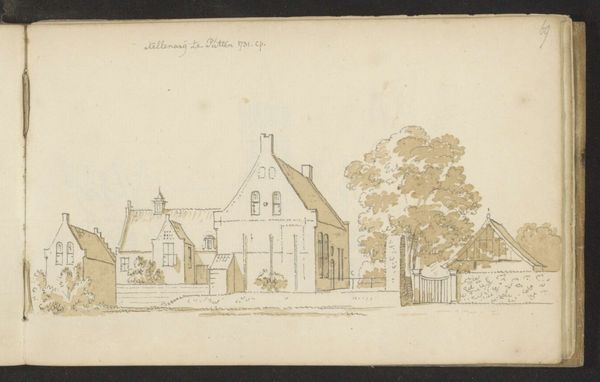
drawing, ink, pen
#
drawing
#
aged paper
#
quirky sketch
#
baroque
#
pen sketch
#
sketch book
#
landscape
#
personal sketchbook
#
ink
#
pen-ink sketch
#
pen work
#
sketchbook drawing
#
pen
#
cityscape
#
storyboard and sketchbook work
#
sketchbook art
Copyright: Rijks Museum: Open Domain
Curator: Look at this fantastic, delicate sketch: “Kasteel Fransenburg te Nijbroek,” likely created between 1732 and 1736 by Abraham de Haen the Younger. Editor: My first thought is: it’s like a visual whisper. Pale ink, scratchy lines... I feel like I've stumbled upon a private thought, doodled in the margin of a much larger story. Curator: Precisely! The work employs pen and ink on paper, capturing the Fransenburg Castle as it appeared in Nijbroek. What strikes me is how such ephemeral lines capture something about Dutch identity through architecture, as a cultural anchor. Editor: I can see that, although there's also a wistful quality to it. Those aged yellows and greys – they’ve imbued it with the character of memory itself, not only representing physical location but emotional. Almost haunted with time and passing, somehow. Curator: That’s interesting, given how architectural drawings, particularly during that period, were instruments for celebrating or re-imagining social structures—displays of status, ownership. Here, we are reminded how these objects fade over time as monuments lose prominence in history and their social meaning shifts. Editor: And then it begs the question: Was he actually commissioned or was this his musing over architecture from his position as the son of a well-known painter? I feel like if the castle were more central in the drawing then the power dynamic could change the reception. What is more important here—nature and landscape or castle and wealth? Curator: I think it does both simultaneously, inviting the audience to do the same! Haen shows the landscape and its context. He's reminding the upper class what is beyond the castle grounds; that is how the upper class of the time also benefited economically from nature, in some ways. It's incredibly balanced. Editor: A fine balance, I think. It invites more questions than answers and suggests that identity and power may always be under revision as time fades history. I’m captivated! Curator: As am I, with a reinforced sense that landscape art then, as now, can offer an amazing record of public, social, and even emotional change.
Comments
No comments
Be the first to comment and join the conversation on the ultimate creative platform.
